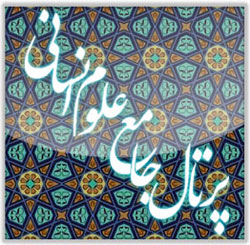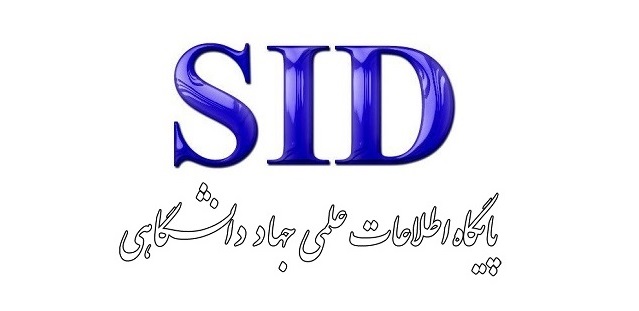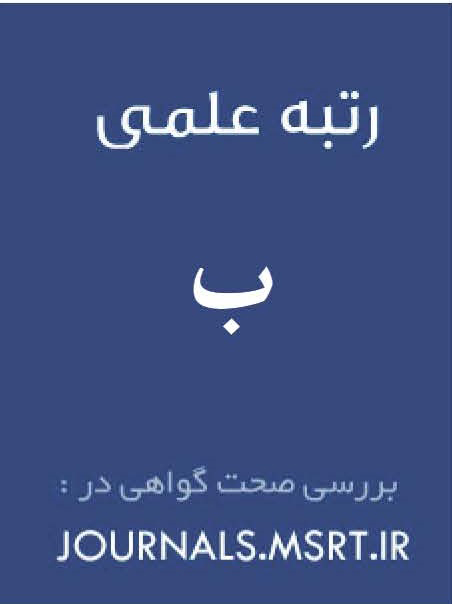تحلیل شناختی استعارههای «نفس» در مجمعالبحرین ابرقوهی
کلمات کلیدی:
استعارۀ مفهومی, نفس, عرفان, مجمعالبحرین, ابرقوهیچکیده
به دنبال تحوّلات علوم شناختی در نیمۀ دوّم قرن بیستم، لیکاف، زبانشناس و جانسون، فیلسوف آمریکایی با طرح نظریۀ معاصر استعاره، نشان دادندکه نظام ادراکی انسان، اساساً استعاری است. آنها عقیده داشتندکه استعاره، ابزاری شناختی و فراتر از یک آرایۀ ادبی است و ذهن و اندیشۀ انسان برای شناخت و درک بهتر مفاهیم انتزاعی، استعاره میسازد. لیکاف و جانسون، استعارههای مفهومی را به سه دستۀ هستیشناختی، جهتی و ساختاری، طبقهبندیکردند. از آنجا که مفاهیم عرفانی نامحسوساند، عارف برای بیان مکاشفات و تجربیّات معنوی خود، گرایش به استعاره دارد. نفس به عنوان حقیقتی انسانی، از مباحث مهم در آثار عُرفاست. مجمعالبحرین، از آثار منثور عرفانی است که شمسالدّین ابراهیم ابرقوهی در فاصلۀ سالهای 714-711 هجری قمری، آن را به رشتۀ تحریر درآوردهاست. این پژوهش به روش توصیفی-تحلیلی، استعارههای مفهومی نفس را در مجمعالبحرین ابرقوهی بر اساس نظریۀ لیکاف-جانسون، استخراج و بررسی کردهاست. استعارههای مفهومی نفس در مجمعالبحرین از دو نوع هستیشناختی و جهتیاند. یافتههای پژوهش نشان میدهد که بیشتر استعارهها از نوع هستیشناختیاند و از میان آنها «انسان» بودن نفس، بسامد بیشتری دارد. در بین استعارههای انسانانگارانه، «زن» بودن نفس، جلب توجّه میکند. نفس در مجمعالبحرین، کارکردهای شناختی متفاوت و متناقضی مانند نیرومندی، پاکی، عصیانگری و... دارد.
دانلودها
مراجع
1. Stace WT. Mysticism and Philosophy. Tehran: Soroush; 2022.
2. Abarquhi I. Majma' al-Bahrayn. Tehran: Mawla; 1985.
3. Ibn Battuta MiA. Rihla. Tehran: Karnameh; 2016.
4. Shamisa S. Bayan (Rhetoric). Tehran: Mitra; 2015.
5. Ansari KA. Sad Maydan. Tehran: Zabane va Farhang-e Iran; 1989.
6. Suhrawardi Aa-QiA. Adab al-Muridin. Tehran: Mawla; 2017.
7. Rahimi A, Musavi SZ, Morvarid M. Animal Symbols of the Self in Mystical Texts with an Emphasis on the Works of Sana'i, Attar, and Molavi. Literary Textual Research. 2014;18(62):147-73.
8. Ahmadi H, Shida S, Daneshgar A. Edmund Husserl's Theory of Intentionality and a Comparative Analysis of the Views of Husserl and 'Ayn al-Qudat Hamadani. Journal of Literary Text Research (Dehkhoda). 2024;12(62):59-75.
9. Aristotle. Poetics. Tehran: Bongah-e Tarjomeh va Nashr-e Ketab; 1964.
10. Shams Qays MiQ. Al-Mu'jam fi Ma'ayir Ash'ar al-'Ajam. Tehran: Elm Publications; 2009.
11. Lakoff G, Johnson M. Metaphors We Live By. Tehran: Agah; 2020.
12. Fotouhi Roudma'jeni M. Stylistics: Theories, Approaches, and Methods. Tehran: Sokhan; 2019.
13. Kövecses Z. Metaphor: A Practical Introduction. Tehran: Agah; 2019.
14. Nasafi Aa-DiM. Al-Insan al-Kamil. Tehran: Tahuri; 2015.
15. Farghani SiiM. Mashariq al-Darari. Qom: Bustan-e Ketab; 2018.
16. Haqqani Zanjani H. The Meanings of the Self in Psychology from the Perspective of the Quran. Maktab-e Islam. 1999(8):45-63.
17. Seyf A, Musivand N. Moses (a.s.) and Pharaoh in the Masnavi Ma'navi. Journal of the Faculty of Humanities, University of Tehran. 2002;4(8):55-74.
18. Bal'ami MiM. Tarikh-e Bal'ami. Tehran: Zavvar; 2013.
19. Maybudi AiM. Kashf al-Asrar wa 'Uddat al-Abrar. Tehran: Tehran University Press; 1978.
20. Amoli HiA. Jami' al-Asrar wa Manba' al-Anwar. Tehran: Hermes; 2012.
دانلود
چاپ شده
ارسال
بازنگری
پذیرش
شماره
نوع مقاله
مجوز
حق نشر 2025 فاطمه مسرور, سمیرا رستمی, سیّد محسن ساجدی راد (نویسنده)

این پروژه تحت مجوز بین المللی Creative Commons Attribution-NonCommercial 4.0 می باشد.








